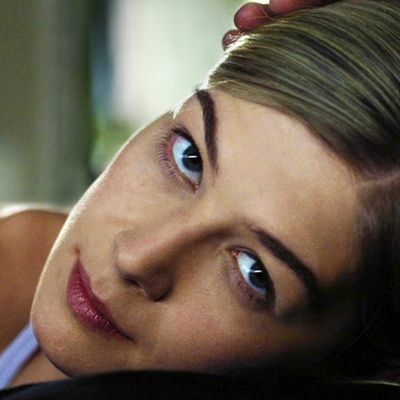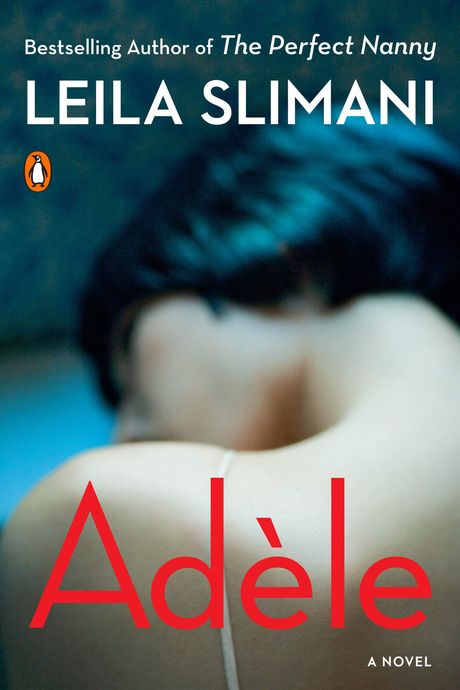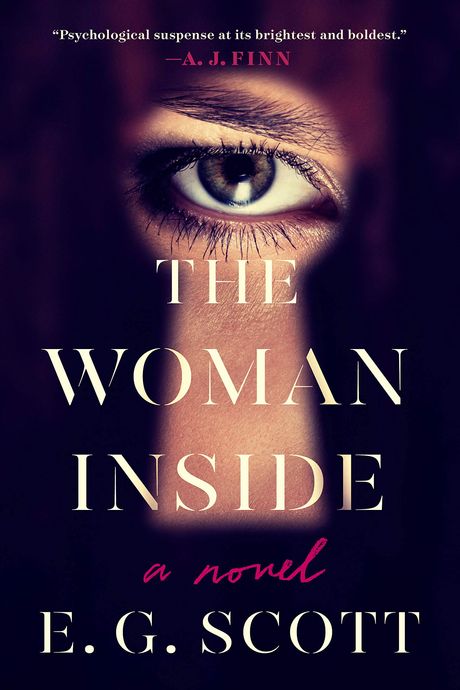
“In her life, nothing was going to happen,” Flaubert writes in Madame Bovary of his wayward young creation. “Such was the will of God! The future was a dark corridor, and at the far end the door was bolted.” A lot does happen to Emma Bovary, of course, before she swallows that vial of arsenic, vomits up an astonishing amount of blood, and then “cease[s] to exist.” She shops until the bills threaten to suffocate her, rolls about making love to her paramour Rodolphe in fields of wheat, bears a child, neglects that child. And she destroys her family. But that feeling — of nothing happening — haunts Emma until her body’s last wretched spasm. Life has not been enough for her.
Flaubert might have adored or reviled Emma; that question is still up for debate. But it was exactly his ambivalence — and the indeterminacy of her likability — that set the template for potent female characters ever after. Fuck likeable: she was real. Whether readers love or pity her, most of them agree she’s one of the most dynamic creations in literature.
More than 150 years after Bovary breathed her last, the market is flush with psychopathic she-beasts and irredeemably miserable vipers. Villainous bitches are popping up everywhere. That shouldn’t surprise anyone, given the twisty vine of rage rightfully wrapping itself around American women for the last several years (or decades). In fiction, these women follow the Bovary template in at least one respect: The rare angry singleton aside, they are married or recently divorced women, unhappy with the dull rituals of companionship or the woefully inadequate men to whom they’ve chained themselves. What we’ve come to call domestic thrillers have become, by and large, stories about psychos in shitty marriages. Unfortunately, many of these psychos are one-dimensional — angry women without a shred of complexity, cardboard storyboards for the inevitable film adaptation.
No novelist exemplifies the genre at its best and worst more vividly than Leila Slimani. Last year, in a “ripped from the headlines” novel given the Law & Order treatment, French-Moroccan novelist Leila Slimani debuted on the American scene with the shocking, riveting The Perfect Nanny, in which a seemingly perfect nanny (who stays late every night and cooks lavish dinners for her employers) ends up murdering her young charges. Maternal insecurities and psychologically complex writing rocketed the delectably repulsive novel onto best-sellers lists and into a coveted slot among the New York Times’ Ten Best Books of the year. As a mother who employs a nanny, I read it with relish and horror.
Just a year later, Slimani is back with another thriller, Adèle. Out this week from Penguin, it was actually Slimani’s debut (published in France in 2014; The Perfect Nanny was released two years later). This time, the villainous bitch is a 35-year-old married Parisian journalist and mother who cannot, to the detriment of her job, marriage, and mental health, keep herself from embarking on pointedly loveless affairs and escapades. It’s a thriller only if you consider dozens of unsatisfying sexual trysts conducted with all the titillation of a Chia Pet commercial thrilling. Adèle is, at best, an oxymoronically sex-filled dud. At worst, it’s offensively oblivious to the idea that female characters in novels have, in fact, had sex before. It takes the premise of Madame Bovary — a discontented young woman imprisoned by her insatiable desires — and muddies Flaubert’s clarity of purpose into a tangle of sweaty limbs with a cigarette dangling out the side.
The allusions to Madame Bovary aren’t subtle. Adèle is married to a doctor, just like Emma, and has one child, though in this case a son, Lucien. The relationship between the center and the provinces has been flipped: Adèle lives in Paris rather than a small town, while her husband Richard pins his hopes on a Bovary-esque château in a country village. Like Emma, Adèle “finds her life small, shabby, lacking in grandeur.” She overdraws on her bank account, and develops devious little plots to keep her overly trusting dullard of a husband in the dark.
Where Emma is romance-obsessed, however, Adèle is — admittedly — sex-crazed, perhaps even clinically addicted. She invites a stranger in an alley to “slide his fingers inside her … against a green wheelie bin.” A dear friend’s crush drives her home from a gallery opening and puts his mouth between her legs. She’s screwed her editor. She embarks on a long, disastrous affair with a surgeon friend of Richard’s. All this happens within weeks. The affairs themselves are unfulfilling, though rarely guilt-inducing. Instead, every orgasm leaves her momentarily determined to reset her life — and then fixated on the need for a new conquest.
I’ve never been so bored by kinky descriptions of cunnilingus or thrusting hips. Absent a compellingly conflicted psyche, knowing from the beginning that the protagonist gets no pleasure from a tongue on her body or a finger on her clitoris damns the whole enterprise. Still worse, Slimani’s prose is a parade of the flat and predictable; nothing is artfully concealed or circumspect. Adèle is, of course, “beautiful.” When she’s upset she “wants to vomit.” What scares her? “Adèle is afraid of dying.” She has long, agonized internal conversations about her “true self,” and what will happen to it if she and Richard move to the country. Adèle, and seemingly Slimani, see no gray area between unscrupulous dick-hungry sex maniac and cookie-baking stay-at-home domestic mama bear. What about work? “Adèle doesn’t like her job.” And Slimani, at least in her debut, doesn’t like subtlety.
Instead, Adèle seems determined to shock us as much as the child murder in The Perfect Nanny does. But what’s shocking about a woman desperate for sex, for something to fill her? Sure, Madame Bovary provoked an obscenity case against Flaubert. In 1857.
There is — and always will be — a good deal to say about modern adultery, about restless and enraged women, about motherhood as a soul-sucking vortex. There are so many varieties of ugliness, kink, and betrayal in the world, and what better place to put them than the contemporary novel, which like the universe is constantly expanding? But Adèle is far from the only recent work to strap a pair of horns on a woman and call that complexity.
In Laura Sims’s wildly overhyped new novel Looker, an embittered recent divorcée befriends her famous actress neighbor, becomes a little too enamored of her — and then things take a very dark turn. No new territory is staked out in the annals of Jealous Fictional Women: We’ve all seen Single White Female. The forthcoming My Lovely Wife, a Mr. and Mrs. Smith retread on acid about a husband-and-wife team of serial killers, is based on the author Samantha Downing’s simplistic query, “What if the woman was the instigator?” The Woman Inside, created by a pair of writers under the pseudonym E.G. Scott and already purchased for TV by the producers of Sharp Objects, has thrown every last scrap of Woman-thriller leftovers into the pot: a miserable marriage wrecked by an opiate addiction, infidelity, and (wait for it) secrets. Kirkus called it “shallow as the grave.”
Every unhappy couple is now unhappy in exactly the same way, and every unhappy woman is a rotten-to-the-core fiend with the interiority of a Muppet (apologies to the Muppets). Adèle and its shelf-mates have been lured by the siren song of Bad Girl Literature — novels conceived entirely around the premise that women will read and share them with delight because the protagonists are naughty, or downright psychopathic, and that this represents a new horizon in literature.
When Claire Messud published The Woman Upstairs in 2013, a reporter asked her whether her protagonist was likable enough, sparking a fruitful debate about our gendered expectations for fiction. But by the time the Gone Girl film debuted the following year, the paradigm had shifted. Amy Dunne became a feminist folk hero, gleefully quoted by former “cool girls” enthralled by her thirst for ruining men. That same year Game of Thrones’ Arya Stark turned from aggrieved little girl to vengeful maniac, sliding her Needle through men’s throats and jamming a knife into their eyes. We all cheered. Over in France, in that annus horribilis for Bad Girl Lit, Adèle was published to general acclaim.
Good work has come out of this trend. It’s striking how deftly Adèle’s author went on to convey loneliness and paranoia in The Perfect Nanny. Myriam, the mother in Nanny, wants work and time away from her children with the same zeal that Adèle wanted sex. But her obliviousness to her own inadequacies, coupled with a disdain for her children that paradoxically grows the longer she’s away from them (even as we know what will happen to those children), makes her a powerful avatar of many mothers’ blind spots and insecurities. Louise, the nanny, is outed as a murderer from the first line. And yet the paltry emotional compensation she receives for the baroque care she provides, along with the occasionally monstrous qualities the children display over time, lead readers to sympathize, if not empathize, with her plight. The Perfect Nanny is shocking, yes, but not because two children are murdered. It’s shocking because the crime almost makes sense.
As Parul Sehgal recently wrote about Kristen “Cat Person” Roupenian’s new collection of stories, “The desire to seem shocking — as opposed to a curiosity about thresholds physical and ethical — tends to produce provocation of a very plaintive sort.” I wanted to hate Adèle, to find her repugnant, or glimpse a psychological revelation. Give me more female protagonists to hate! Instead, like the Gillian Flynn knockoffs crowding every Barnes & Noble entry table, Adèle thinks it can fool readers into seeing moral quagmires where there are just psychopaths. Like the most rote of villains, Adèle is “bad” to the core. Nothing can fix her or ameliorate her or convert her particular agony into a different sort. So why should we care?
Underneath Emma Bovary’s dissatisfaction is a yearning for her life to be better — for her windows to be covered in damask and silk, her affairs to be passionate and all-encompassing, for all kisses to ravish her to the core. It’s the fault, Flaubert tells us, of bad literature, fanciful tales that have convinced her that she is “the amoureuse of all the novels, the heroine of all the plays, the vague ‘she’ of all the poetry books.”
Bad books about one-dimensional women are, alas, still distorting perceptions 160 years later.



